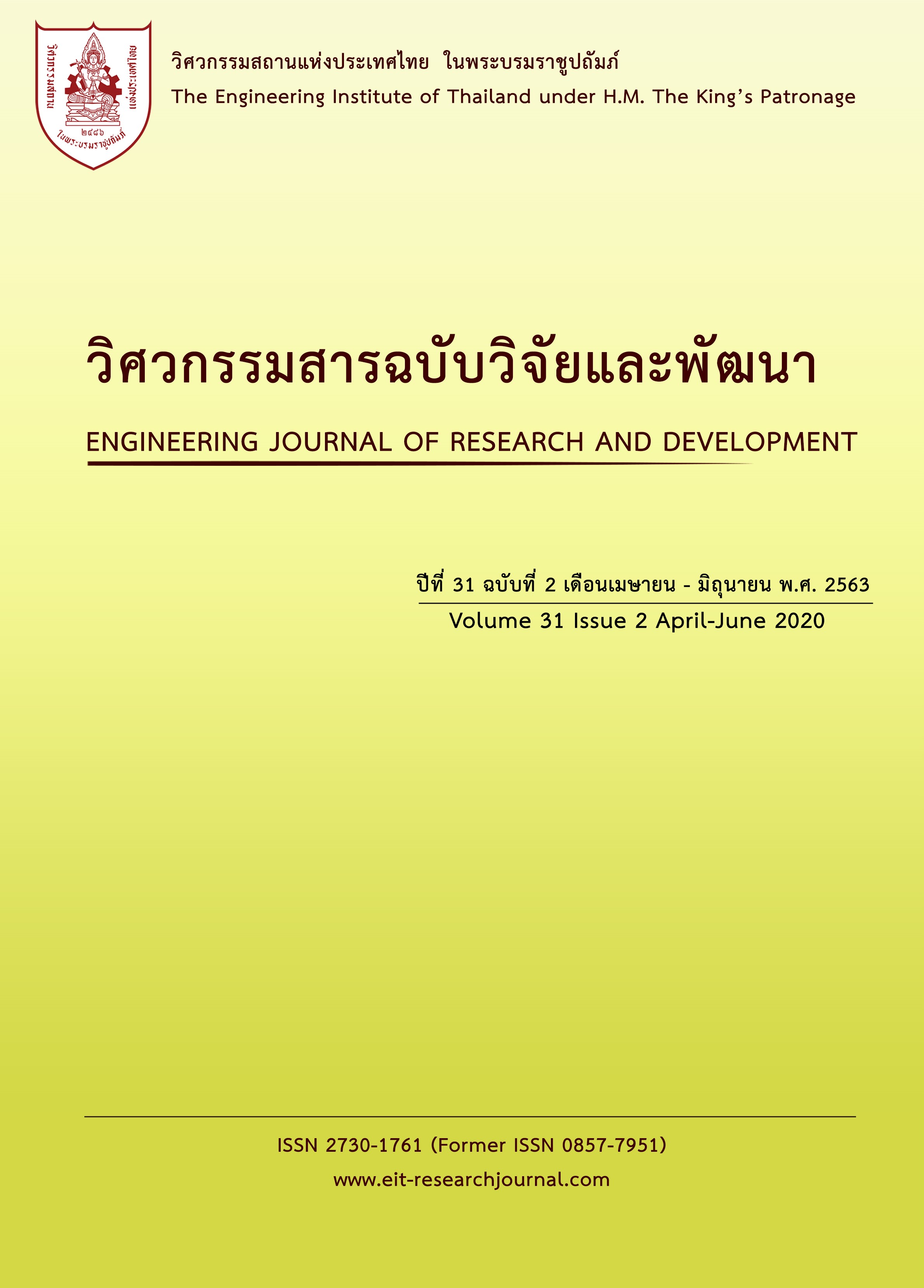การเพิ่มศักยภาพในการดูดซับโลหะหนักของดินลมหอบขอนแก่นด้วยการผสมเบนโทไนท์
Main Article Content
Abstract
The increase of industrial plants is the main cause of various pollution problems and heavy metals are one of the harmful toxins. One approach to help prevent heavy metals from spilling into nature is to use adsorbent material. The objective of this research is to study the capacity to adsorb Copper, Nickel and Zinc of the loess as mixed with sodium bentonite using the batch test and column test. The batch test was used for finding the equilibrium time and adsorption isotherm based on the adsorption isotherm of Langmuir so as to clarify the adsorption. The column test was utilized for conducting the adsorption simulation closely similar to the actual condition; to release waste water onto the soil and rinse from the rain water. The experimental results showed that in the batch test, bentonite helps to increase the potential for absorbing heavy metals as well as compared with normal loess, where the appropriate ratio for adsorption is loess mixed with 40% bentonite. When the time elapsed, the concentration of the heavy metals solution dramatically decreased until reaching the equilibrium state at 48 hours. The adsorption isotherm of Langmuir performed the explication of the adsorption efficiently. The adsorption capacities ( ) were ranked as follows: Copper > Zinc > Nickel: in the column test, it was found that the soil was capable of performing to adsorb heavy metals abundantly in the first period, and then it gradually decreased and leaching of the distilled water was able to less cleanse the heavy metals. After leaching, the soil was still able to adsorb the heavy metals but the capacity to adsorb was decreased.
Article Details
The published articles are copyright of the Engineering Journal of Research and Development, The Engineering Institute of Thailand Under H.M. The King's Patronage (EIT).


